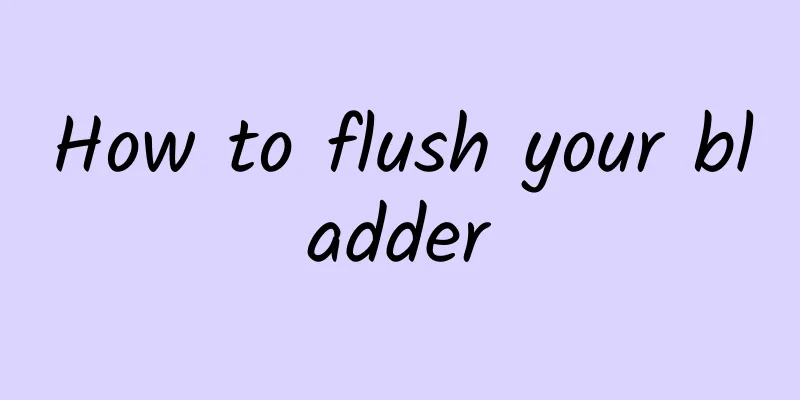How to flush your bladder

|
Bladder irrigation is a relatively common treatment method. It can eliminate inflammation and remove some impurities in the bladder. It has a good therapeutic effect on cystitis or urinary system inflammation. There are two main methods of bladder irrigation. One is a closed flushing method and the other is an open flushing method. When performing bladder irrigation, you should be aware of some precautions. How to flush your bladder (1) Closed flushing method: That is, flush the infusion bottle, flush the medicine or put it in the infusion bottle, and hang it on the infusion stand beside the bed. The bottle is about 1 meter high from the patient's pelvis. The infusion tube is connected to the tee below, and then connected to the urinary catheter and drainage tube respectively. The height of the tee is slightly lower than the plane of the pubic symphysis to facilitate the emptying of the liquid in the bladder. When flushing, first clamp the drainage tube and infuse the flushing solution at a rate of 60 drops/minute. After injecting 100ml each time, clamp the infusion tube and open the drainage tube to allow the flushing solution to flow out. Repeat this process 3-4 times each time. (2) Open flushing method: Use a bladder irrigator or large syringe. Separate the connectors of the indwelling urinary catheter or cystostomy tube each time you flush. Wrap the distal drainage tube connector with sterile gauze and set it aside. Disinfect the end of the urinary catheter or cystostomy catheter and support it with sterile gauze. Connect the irrigator filled with flushing fluid to the end of the catheter, slowly inject the flushing fluid, and then let it flow out naturally or slowly suck it out. Repeat this process until the outflowing liquid becomes clear. After flushing, flush the distal drainage tube once, then connect the urinary catheter or cystostomy to continue drainage. Precautions for bladder irrigation Commonly used flushing solutions include 0.02% furacilin, 0.02% rafoinol, 3% boric acid and isotonic saline. The water temperature is 35℃-37℃. Use cold flushing solution for bladder bleeding. Flush 2-3 times a day, 50-100ml of solution each time. The amount of flushing solution after bladder surgery should not exceed 50ml. Observe the patient's reaction during flushing. Stop flushing if there is abnormal situation such as bleeding, severe pain, or reflux volume less than the infusion volume. |
<<: TCM treatment of active bladder syndrome
>>: Disadvantages of cystoscopy
Recommend
Why do closed comedones occur?
Closed comedones, also known as whitehead comedon...
Why do I have puffy eye bags when I wake up in the morning?
Many people have swollen eyes when they wake up i...
Is it serious to have uterine polyps?
The uterus is one of the most important reproduct...
What's wrong with diarrhea? It's because of this
In our lives, many people have loose stools. Most...
The effects and contraindications of kudzu flower
Kudzu flower and Poria cocos come from the same p...
What to do if you are allergic to dust
Our skin is a very delicate area. Some people hav...
How to make pancakes with electric baking pan
To make pancakes at home, you can either use a fr...
What causes horizontal lines between eyes?
The appearance of horizontal lines between the tw...
What to do if you have heartburn from eating chili peppers?
Chili pepper is a common food in our diet. There ...
Right adnexal cyst
Female friends' physiological functions are v...
What are the effects of Lulutong Chinese medicine
Lulutong is a traditional Chinese medicine with e...
What to do if you have diarrhea and dehydration? That’s the scientific method!
Although diarrhea is not a serious disease, prolo...
What is below the rib cage?
We all know that the chest cavity is a very impor...
You’ll learn how to make these six kinds of sea cucumber soups to nourish the kidney and strengthen yang at a glance!
Sea cucumbers are high in protein, but low in fat...
Sciatica in men
We all know that the sciatic nerve is the largest...









